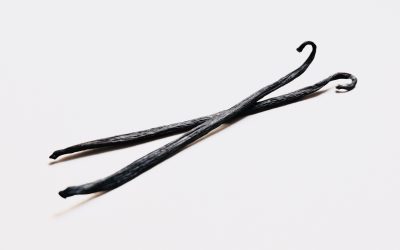The first thing to understand when looking at gelatine is what it actually is. Gelatine is a colourless and flavourless ingredient, that is commonly derived from collagen from animals. It can come in two forms when used in baking, either a brittle sheet or as a powder. Most recipes will call for the sheets to be used. The sheets need to be soaked in water to change it from a brittle sheet to a gummy consistency.
Using Gelatine in baking
Gelatine is used in many different products, mainly as a gelling agent. Some of the most common items that contain gelatine can include trifles, marshmallows and jellies. It is also very commonly used in confectionary products like gummy bears and other chewy sweets.
It is important to understand how best to use it, as there can be some mistakes that could be easily made. This can have significant problems in the end product.
Firstly, it is important to know that it will only set once it has chilled. This means that in using it you should always allow for the time required for the product to cool and set completely. This is usually overnight.
A mistake people can often make is to boil a mixture once it has had gelatine added to it. You should never do this as it can cause it to scorch. This will affect the finished texture of the product or cause it to not set at all.
When using gelatine, it is vital to make sure that you are using the correct quantity for what you are trying to set. Leaf gelatine is the most commonly used type, and as a general rule if trying to set a jelly you will need four leaves to set a pint of liquid. (providing the liquid mix is roughly the consistency of water).
Adding too much will create a rubbery texture. Too little in the mix will mean it will not set completely and may not hold when cut or demoulded.
Fruits to avoid
if you’ve ever tried to make a jelly or mousse with pineapple, papaya or kiwi you’ll know exactly what I’m about to bring up. It won’t set .. no matter how much you shout at it and put it in the freezer.
The reason is that these 3 fruits contain enzymes which break down the protein in the gelatine. The gelatine basically forms long chains of protein but the enzymes break them down and stops the gelatine from setting up. It’s the same process as when you break down food by chewing it in your mouth.
The enzymes in pineapple is bromelain, papaya is papain and kiwi is actinidin. So if you are going to make jelly or mousses you can use pineapple, papaya or kiwi but you need to cook it first. The heat will break down the enzymes.
So using purees that have been boiled or canned fruit is fine. Those are the main three, but you also need to be carful with mango and guava since they still have similar enzymes too.
Types of gelatine
The first thing you need to know is there are a few main types. Everyone uses a different type, just to make things difficult.
You’ve got
- Powdered
- Titanium
- Bronze
- Silver
- Gold
- Platinum
- Red
And also fish gelatine, which is a rare but really useful one. Apart from the fish and powdered gelatine you buy the others in sheets. These are all different strengths which can be really confusing when you are converting.
Setting strength
The good news is that with the leaves, if they are stronger in “setting power” then they are made to be lighter in weight. So each sheet should be the same strength overall.
That means that one sheet of bronze gelatine will equal one sheet of all the others. You can just do a direct swap. The gold, titanium, platinum names ect don’t mean the setting strength is different. It’s just that the higher up you go the more sheets are in the pack. Because they are stronger they are thinner and you can fit more in
Don’t forget, you always need to soak gelatine in COLD water before you use it, it needs to hydrate and takes about 5- 10 minutes until its soft and pliable So… powdered gelatine This normally used in pastry shops just to be a little more accurate and control exactly how much water the gelatine contains, but it really is a tiny difference.
The main reason for using powdered gelatine for me is because that’s how you buy fish gelatine. It’s great to use when customers don’t eat pork or beef, since normal gelatine is made from pork skin or the collagen inside beef bones. To hydrate powdered gelatine you need to weigh out your powder and then use about 3 parts water to 1 part gelatine before you can use it.
With whatever your making, don’t forget that it can take 2-5 hours for it to set fully. If I’m making panna cotta or jellies then I will always try and make them the night before.
Alternatives to Gelatine
There are some alternatives to gelatine, and these can be particularly useful if you are following a vegan diet. One of the most prominent options used is agar agar, which is used in the same way as gelatine. A big difference between the two is that agar agar is normally found in a powder form, although it is also possible to find it in a sheet form like gelatine.
If you are planning to replace gelatine in a recipe then agar agar can be substituted for gelatine at a ratio of 1:1, so measurements can be kept the same.
A second option for an alternative is Carrageenan. Carrageenan is also a vegan alternative, and is derived from red seaweed, and develops a gel-like consistency once it has been boiled. It is very commonly used in supermarket products, like ice creams or marshmallows. It is also found mainly in a powder form, and has a slightly softer texture than gelatine.
To learn over 50 step by step recipes you can use to start your own business, along with regular live classes, sign up to The Online Pastry School now to get a 30 day free trial here
To find out more about gelatine and it’s substitutes, see here


